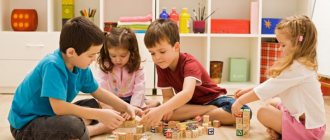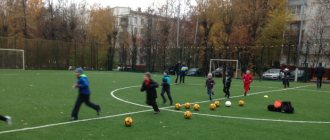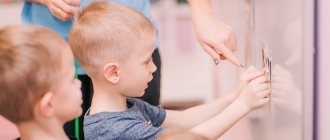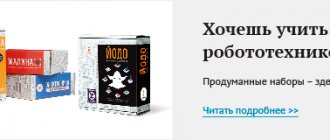Development of logical thinking
Children already in early preschool age are faced with a variety of sizes, shapes, and colors of objects around them. The perception of the surrounding world occurs without special preparation. However, if assimilation occurs intuitively, it is most often incomplete and superficial.
The development of logic and thinking is an integral part of a child’s successful preparation for school and his harmonious development.
Senior preschool age is marked by the beginning of the emergence of the sign-symbolic function of consciousness. This period becomes important in general for mental development, for the formation of readiness for schooling.
It is customary to use symbolic symbols to designate objects, sequences, and sets, which is what children are introduced to in preparation for school. The kids actively accept it.
Especially if such models are invented together, focusing on the use of notation not only in words, but also graphically (for example, not only rectangles, but also other figures that have 4 corners fall into one group of objects, emphasis is placed on the number “4”) .
Types of thinking
The development of thinking in a child depends on age characteristics. This means that as a fidget grows up, the mental processes occurring in his brain become more complex. Thinking happens:
- Visual and effective is typical for children under 2 years of age. They strive to obtain the desired result;
- Visual and figurative is typical for preschoolers under 7 years old. The process of perception becomes more complicated, anticipation of the result appears;
- Verbal-logical appears at 6-6.5 years in the form of rudiments that require development. Preschoolers are able to find the answer to solving a complex problem in the form of transforming an object (well-known tasks for rearranging one stick so that the result is something different from the original object), determine the sequence of interaction of objects (for example, when solving a logic problem about a goat, a wolf and cabbage , which must be transported on one boat from one shore to another under certain conditions).
Types of thinking: stages of child development
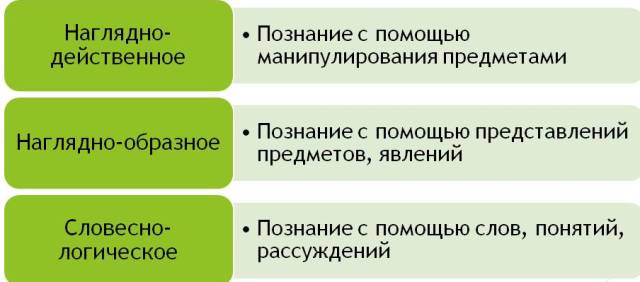
Development of thinking in preschool children. The following types of thinking dominate in a preschooler:
- objective-active, which develops spurred by the child’s imagination; typical for children aged 1 to 2 years.
- visual-figurative, which develops on the basis of the child’s existing knowledge; typical for children aged 3 to 4 years.
- verbal-logical, since speech begins to play an important role in achieving any goal of the child; typical for children of older preschool age - 5-7 years.
Subject-effective thinking
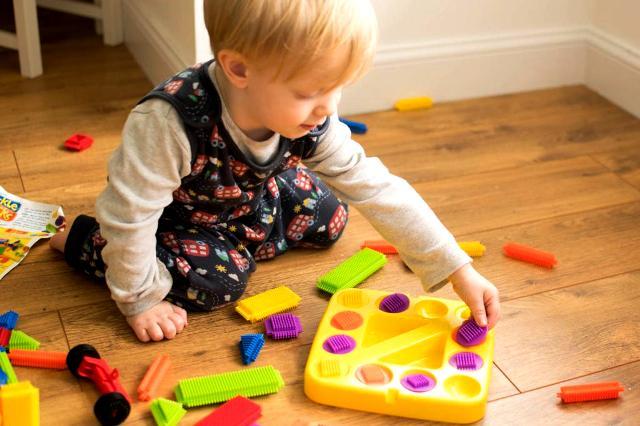
The youngest preschoolers love to break toys. They are not aggressors releasing negative energy, they are explorers. The objects that surround the child are interesting to him, he wants to touch them and take them apart. One action follows another. Speech is not important here, and the little ones do not yet have the ability to speak and explain their actions. The child thinks with his hands, exploring the properties of each object.
Visual-figurative type of thinking
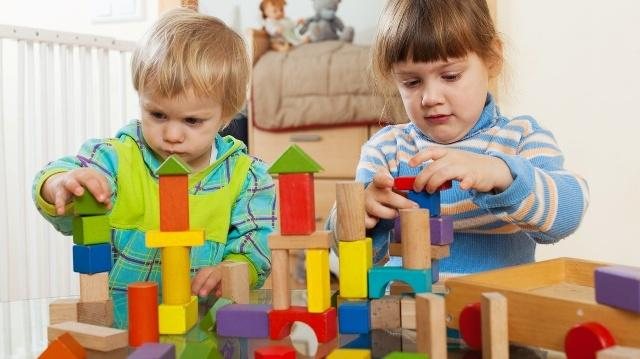
When a child turns three or four years old, he already owns certain images that he actively uses in play. At the same time, objective-active thinking occurs; visual-figurative thinking simply becomes its continuation.
Verbal and logical thinking
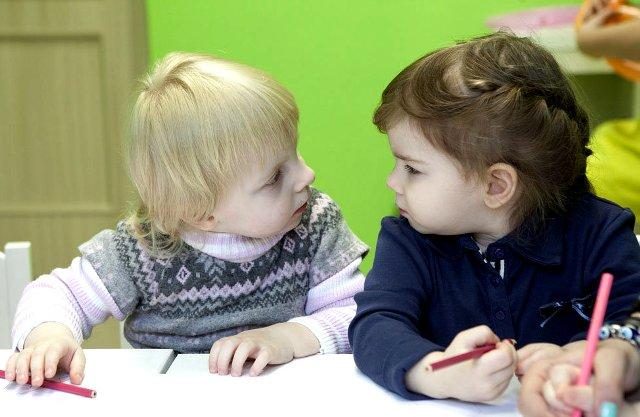
At the age of five, preschoolers are already actively chatting, can analyze information, and give a detailed answer. They use speech in play and in everyday life; children remember that with the help of speech it is easier to achieve the desired result.
Abstract-symbolic
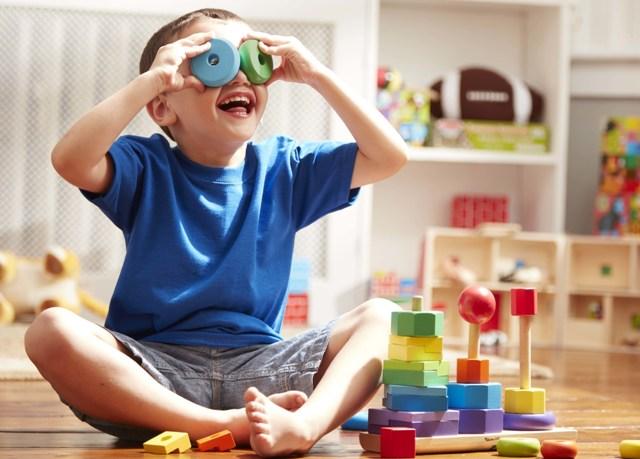
With this thinking, the child can separate the essential properties, signs of an object from the unimportant. The baby understands that a specific object can be replaced by another if it has the same characteristic features.
Creative thinking (creativity)
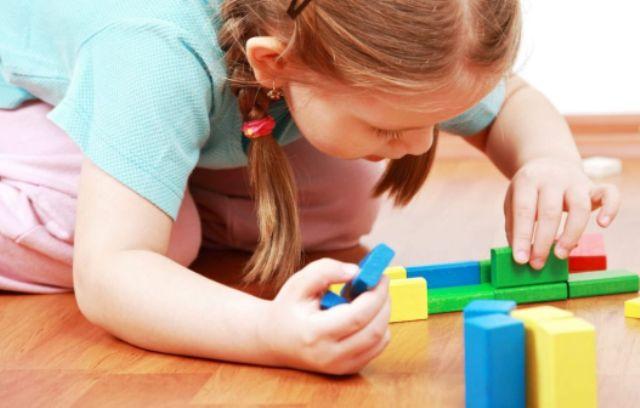
Creativity knows no boundaries or age differences. Whether at two or six years old, a child can enthusiastically build castles with blocks, knead plasticine, or move a brush with paint over a sheet of paper. At the same time, the child makes or draws what he wants, showing imagination. The child also sings, plays music, and dances with his soul.
Logical operations
The structure of thinking includes operations, the presence of which in a preschool child implies full mental development. Operations are:
- Comparison is an operation associated with the establishment of similar and distinctive features of any objects. As a result of a logical operation, a classification may appear;
- Analysis is a mental process associated with the division of a complex object into its individual characteristics or parts. The next stage of analysis is comparison;
- Synthesis is a logical operation that combines disparate parts into one whole concept, object;
In psychology, analysis and synthesis are usually viewed as interchangeable operations.
- Abstraction is the mental separation of essential properties, connections, characteristics of an object from non-essential ones. The presence of the ability to perform such an operation indicates the appearance of abstract logical thinking in the baby;
- Generalization - the operation appears as the child’s vocabulary accumulates, and is associated with the imaginary association of phenomena, objects, actions according to significant characteristics;
- Classification is a thinking operation in which the order of things and phenomena is comprehended and divided according to some criterion;
- Concretization is a logical operation by which a preschooler uses the replacement of a word with a concept with a more specific meaning.
Teaching children 6-7 years old how to draw step by step
Exercises and games to develop thinking in preschool children
In order for thinking to actively develop, you need to constantly work with your child. To help parents and educators there will be didactic, educational and entertainment classes, excursions, meetings with specialists, as well as regular games with children.
Development of imaginative thinking in a preschooler
To develop imaginative thinking, games that involve “gray cells” are suitable. For example, an adult invites a child to look at a picture that shows various objects, but they can all be called in one word. These can be dishes, various animals, items of clothing, furniture, and transport.
Another good option is puzzles. To assemble a picture from many elements, you need to present it as a whole, pay attention to individual details, look for common features in the illustration in order to obtain the integrity of the image.
You can offer to play the game “Everything on the shelves”. In this game, from a bunch of completely different objects, you need to find only those that correspond to specific characteristics.
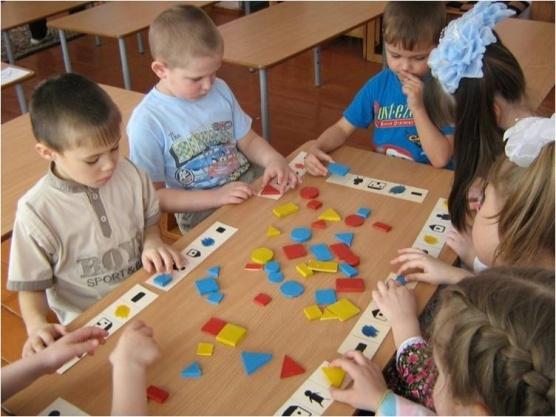
Development of logical thinking in preschool children
Both oral games and the use of visual materials will help to develop logical thinking.
Good oral games such as:
- "Let's make up a fairy tale"
In this game, the adult starts the story, and the child’s task is to finish it.
- "Yes and no"
A game with leading questions to which the second player answers: “Yes” or “No.” The task is to eventually guess the item conceived by the first player.
- "Association"
In this exercise you are asked to select words by association: Dress - summer, fur coat... (winter);
squirrel - hollow, bear... (den), etc.
Using visual materials:
- Make shapes from counting sticks.
- Play the “labyrinth” in the picture, helping the character along the path.
- Use the illustrations to create a story.
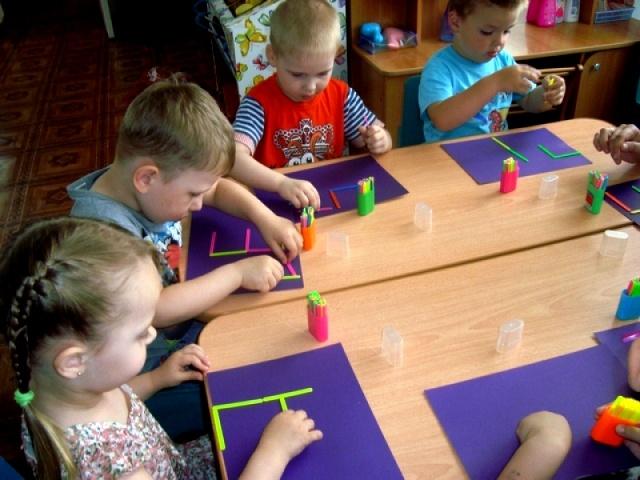
Development of creative thinking
Creative thinking is impossible without the child’s imagination and ability to operate with images. You can offer your child the following games and exercises:

- find familiar images in the blot,
- create an object from several different parts,
- find the same signs in different pictures,
- guess what an object is based on an oral description.
- draw using unconventional drawing.
Development of spatial thinking
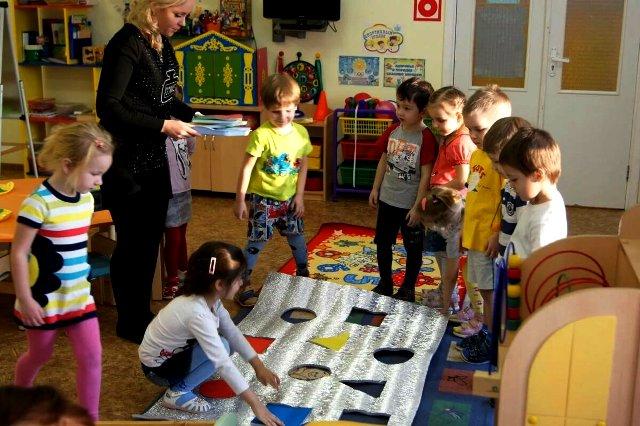
In order for a child to navigate the world around him, he needs to develop spatial skills. Games suitable for this:
- with matches, when you need to build new ones from created figures,
- with drawings, when the child is invited, for example, to play a pirate and find a treasure, following the plan,
- exercise “Farther - Closer”, when the child is asked to move objects to close and far distances at the request of a parent or teacher,
- With your eyes closed, following the teacher’s instructions, you need to draw a line on a piece of paper.
Diagnostics of logical thinking
Logical thinking is one of the main indicators of the quality of a person’s thinking. The ability of a preschooler to independently think logically, identify essential features of objects, actions and phenomena, systematize, generalize, classify, draw inferences and conclusions, substantiate his judgments, prove their truth arises and is formed in the course of his intellectual development.
We wrote in more detail about diagnosing the thinking of preschoolers earlier.
As you develop your child, pay attention to his ability to think logically. How favorably he will stand out among his peers depends on this important indicator.
Exercises for diagnostics
alt: Diagnostics of the thinking of preschoolers
Bonus Skill: Lucid Dreaming
Computer games develop not only thinking, attention and reaction speed. Gamers are more likely to have lucid dreams. These are dreams in which a person realizes that he is sleeping and can control his actions, for example, fly, explore the world, change his own or someone else’s appearance, set his own rules.
The existence of lucid dreams, as well as the fact that gamers see them more often, is confirmed by science. To do this, an encephalogram was taken from the sleeping people. It turned out that lucid dreams occur during the REM sleep phase and during them the beta rhythm of the brain changes.
There are different ways to learn to lucid dream, but it's easier for gamers to do it. Probably the reason is the habit of controlling the character's actions. Sometimes gamers continue to play a computer game in their sleep.
Those who frequently lucid dream have better developed connections between the frontal cortex and the temporoparietal ganglion. This means that signals from the outside and from the body are processed faster and more efficiently and the person is more inclined to be aware and control himself.
For parents to develop their child’s logical thinking
A preschooler who knows how to use logical operations is doomed to successful learning and no problems in the cognitive sphere, since his intellectual level will help him cope with difficulties.
If you want to help your child be successful, we recommend using the following developmental tasks. They will turn your communication into a fun and useful game.
To start classes with a child, it is not necessary to have a pedagogical education.
We recommend alternating types of games to develop different types of thinking.
Oral games
Word games are simple, accessible, do not require special preparation, and can be played in any convenient place. Such tasks develop horizons, clarify, and enrich vocabulary. Choose those that teach you to find analogies, generalize, classify objects and phenomena into groups, and make logical connections.
- Come up with a new ending for a famous fairy tale;
- Compose a story, poems together, that is, one begins, the other continues in meaning;
- Play “riddles”: the parent riddles an object, object or phenomenon and invites the child to guess it using questions that can only be answered “yes” or “no”;
- Play “I believe it or not.” You say a statement, for example, “All dogs are purebred” or “A pear is a tree.” The child answers whether the given sentence is correct. If the answers and decisions are controversial, so much the better; there is an opportunity to reflect and come to an answer using logical reasoning.
Game “Associations” (we develop verbal and logical thinking)
Assignment: choose the appropriate word for the one indicated according to a certain attribute corresponding to the one present in the previous pair, explain your choice.
Mathematical notes of GCD in preparatory groups for Federal State Educational Standards
For example, a bird is a nest, a person is ?. The bird lives in a nest, which means that for the word “person” we will select a word denoting housing - “house”.
- Deaf - song, blind - ... (picture);
- Airplane - pilot, bus - ... (driver);
- Summer - cap, winter - ... (hat);
- Ladle - pan, spoon - ... (glass, glass);
- Spoon - soup, fork - ... (salad, potatoes, meat, noodles), etc.
Game “Say it in one word” (we develop logical operations of classification, generalization)
Assignment: you must name the presented group of words with one generalizing word and explain your decision.
- Kissel, compote, tea, fruit drink (drinks);
- Microwave oven, vacuum cleaner, hair dryer, bread maker;
- Nest, hollow, hole, anthill;
- Bicycle, scooter, airplane, motorcycle;
- Baker, tour guide, seamstress, salesman, etc.
Games using cards, paper, pen
Preschoolers enjoy games that use bright pictures. You need to take advantage of this by using not only cards, but also a pen and paper. The proposed ideas can be supplemented with your own, complicating or simplifying at your discretion.
- Use games to compare and group objects;
- Use ready-made puzzles with matches;
- Compose coherent stories based on the plot pictures. It will be useful to offer them to the child in the wrong order at the beginning;
- Go through labyrinths, rescuing heroes, solve riddles and puzzles on paper.
Board games
Colorful boxes with sets of drawings, rules, and figures attract not only preschoolers, but also their parents. An evening spent in a close family circle is useful both for communication with family and for the development of a little fidget. Lotto, sea battle, chess are classic games that have stood the test of time.
These are activities that will always be relevant and suitable for family holidays. They teach you to win gracefully and accept defeats, to enjoy communication and the process of the game.
In addition, tiles and pictures from board games can be used for teaching. Let's consider several ways.
- Invite your preschooler to recognize objects with his eyes closed, by touch;
- Arrange objects according to a certain algorithm. For example, make sequences of them: increasing, decreasing, by color, size, shape;
- Use dominoes and triminoes to learn counting, addition and subtraction.
alt: Rules of the game “Trimino”
Well-known tasks for selecting analogies, understanding proverbs and sayings, and metaphors are perfect as exercises; games of “sea battle”, “tic-tac-toe”, checkers, cards; charades; tasks like “find seven differences”, etc. 1. “FINISH THE SENTENCE.” The child is asked: “Continue the sentence by choosing the most suitable word.” A tree always has... (leaves, flowers, fruits, roots). The boot always has... (laces, sole, zipper, buckle). The dress always has... (hem, pockets, sleeves, buttons). A painting always has... (artist, frame, signature). 2. “FIND SIMILARITIES AND DIFFERENCES.” The child is given pairs of words for analysis. He must note the common and different in the corresponding objects. For example, nightingale-sparrow, summer-winter, chair-sofa, birch-spruce, airplane-car, hare-rabbit, glasses-binoculars, girl-boy, etc. 3. “FROM PARTICULAR TO GENERAL.” Explain to your child that there are words that denote many similar objects and phenomena. These words are general concepts. For example, the word fruit can mean apples, oranges, pears, etc. But there are words that indicate a smaller number of similar objects, and they are private, concrete concepts. Any of these words, for example apples, means only apples, although they can be large, small, green, red, sweet, sour apples. Now ask your child to match the general concept to the specific ones. Below are two rows of words. For words from the first row, the child selects a suitable concept from the second row: • cucumber, autumn, bee, north, rain, peacock, lake; • vegetable, season, insect, side of the horizon, precipitation, berry, pond, bird. 4. “WHAT’S MORE?” The child must answer the question: “Which is more: birches or trees, strawberries or berries, flies or insects, flowers or lilies of the valley, whales or mammals, words or nouns, squares or rectangles, cakes or sweets?” - and justify your answer. 5. “FROM GENERAL TO SPECIFIC”. The task is the opposite of the previous ones. The child must build a “tree”, the trunk of which is a general concept, for example, nature, and the branches are more specific, for example, living and non-living. Then from the word living - respectively branches: plants - animals - people, etc. The next branching comes, for example, from the word animals: domestic - wild or: birds - snakes - fish - insects, etc. 6. “GET A GENERAL CONCEPT.” Invite your child to name the following concepts in one word and complete the series: apple, pear - ...; chair, wardrobe - ...; cucumber, cabbage - ...; boot, boot - ...; doll, ball - ...; cup, plate - ...; cat, elephant - ...; leg, arm - ...; flower, tree - ...; perch, pike - ...; rose, dandelion - ...; March, September - ...; oak, birch - ...; lantern, lamp - ...: rain, snow - ... The same exercise must be performed with adverbs, adjectives, verbs. 7. “CLASSIFICATION BY VISUAL PATTERN.” For this exercise, you can use children's lotto. Lay out the pictures and ask the child to choose all the pictures that match the standard one. For example, for an apple - all the pictures that depict fruits. Then ask him to name each picture; Discuss with him why he made such a selection, how these objects are similar (different). You can select pictures by a certain, specified general characteristic, for example, by shape, color or functionality. 8. “SOLD INTO GROUPS.” The child is offered a number of images, which he must sort into general groups, for example: mushrooms and berries, shoes and clothes, animals and flowers. He must give a name to each resulting group and list (name) all its components. 9. “CLASSIFICATION BY GENERALIZING WORD.” For a given general concept (for example, dishes, vegetables, furniture, objects made of iron, round, prickly, fly, sweet, etc.), the child must choose from a set of pictures those that will correspond to him. 10. “EXTRA WORD.” The child is asked to highlight a word or feature that is superfluous among others, and to select a generalizing concept for all the others. The child must answer the questions: “Which word is extra? Why?". • Plate, cup, table, teapot. Dark, cloudy, light, chilly. Birch, aspen, pine, oak. Fast, running, skipping, crawling. Sofa, table, chair, wood. Much, pure, little, half. Pen, chalk, pencil case, doll. Yesterday, today, in the morning, the day after tomorrow Earthquake, typhoon, mountain, tornado. Comma, period, dash, conjunction. Neat, sloppy, sad, diligent. • Winter, summer, autumn, June, spring. Lie down, stand, cry, sit. Old, tall, young, elderly, young. Red, blue, beautiful, yellow, gray. Be silent, whisper, laugh, shout. Sweet, salty, bitter, sour, fried. 11. "RANKING". Explain to your child what ranking is and ask him to rank the following concepts according to a certain (in each case different) principle: peas - apricot - watermelon - orange - cherry; bee - sparrow - butterfly - ostrich - magpie; tooth - arm - neck - finger - leg; snowflake - icicle - iceberg - ice floe - snowdrift; street - apartment - city - country - Earth; baby—youth—man—old man—boy; be silent - speak - shout - whisper. 12. “MULTIPLE MEANING OF WORDS.” Play the game “Look how interesting it is!” with your child. Tell him some word (noun, adjective, adverb, verb). The task is to come up with as many situation sentences with a standard word as possible in a short period of time (1 - 3 minutes).
Verbal and logical games in the development of children of senior preschool age
At the end of the preschool period, children begin to develop verbal and logical thinking. It involves developing the ability to operate with words and understand the logic of reasoning. And here you will definitely need the help of adults: parents and teachers.
Famous psychologist L.S. Vygotsky established natural connections between learning and mental development. Without learning, without the active transfer of the experience accumulated by mankind, full development cannot take place.
Children have an unconscious desire to learn something new and unusual. Adults, concerned about the future of children, try to correctly direct this desire, forcing and developing their needs from natural, material, social to spiritual.
To make the sphere of children's education relevant is to create such situations, using various teaching methods, in which the desire for knowledge and perception of this or that material or event will become constant and dominant. A creative approach is needed from both sides - adults and children - to this problem. This is possible when the child makes his own efforts through a situation of creative communication created by adults in solving various problems. At the same time, not only performing abilities are developed: memory, attention, the ability to copy the actions of others, repeat what is seen or heard, which is no less important for the development of children, but also creative ones: observation, the ability to compare and analyze, combine, find connections and dependencies, patterns .
By the age of six, a child develops an eye, a visual assessment of the proportions characterizing an object, deliberate memorization and the ability to reproduce what has been learned. He can already make correct judgments and draw conclusions about familiar phenomena.
Research by psychologists and teachers has convincingly proven that in the comprehensive development and preparation of a child for school, the role of his practical activities is extremely important: irga, work, systematic educational activities.
As a rule, children who enter the first grade can read, write and, it would seem, are fully prepared for school education. However, some first-graders, faced with constant mental workload, find difficulties in solving and explaining mathematical problems, forming certain rules and concepts, and establishing and justifying cause-and-effect relationships. One of the common reasons for this phenomenon is the insufficient development of verbal and logical thinking in preschool age. Children of this age exhibit a superficial, inconsistent analysis of problems and situations, and an inability to plan. It is generally accepted that visual-figurative thinking predominates in preschoolers, which is completely based on children's sensations, perceptions and ideas. Famous psychologists point to this in their works: D.B. Elkonin, V.V. Davydov, P.Ya. Galperin. J. Piaget believes that the thinking of preschoolers is illogical by nature, because “not burdened with knowledge.”
But currently, many games are being developed aimed at developing logical and imaginative thinking, arbitrary memory and attention, speech and creative imagination. The sooner we begin to develop and stimulate logical thinking based on the child’s sensations and perceptions, the higher the level of his cognitive activity will be, the faster the main, natural transition from concrete thinking to its highest phase - abstract thinking will take place. In addition, intellectual-linguistic relationships confirm the developmental influence of verbal-logical thinking on the speech of preschool children.
During games and activities, an adult (teacher or parent) is required to:
- patience;
- ability to play and believe in the game;
- the ability to accept and understand any answer, proposal, or decision of the child;
- the ability to emphasize the uniqueness and individuality of each child;
- creation.
In the process of performing such games and exercises, preschool children’s ability to analyze, synthesize, compare and generalize is activated.
Adults, playing with a child who has any level of speech and intellectual development, improve the most valuable mental processes for the child: thinking, attention, memory, speech, imagination, and the ability to be creative.
One of the main indicators of a child’s readiness for school is the level of his mental and speech development. Understanding the teacher’s verbal instructions, the ability to answer his questions and formulate his own questions to him is the first thing that is required of the child in the educational process.
Games and exercises aimed at developing mental and speech abilities in preschoolers.
Compiling a story from pictures. In front of the child, 4 pictures are placed in disarray, which depict a certain sequence of events that is well known to the child. The adult asks the child to arrange the pictures in the right order and explain why he arranged them that way. Then they are asked to compose a story based on the pictures.
Understanding the grammatical structure of sentences.
“Natasha went for a walk after watering the flowers.” - What did Natasha do first: went for a walk or watered the flowers?
“In many years, Seryozha will be a little older than Sasha is now.” - Who is older? (Sasha).
Recognition of objects by given characteristics.
Name an object about which you can say:
yellow, oblong, sour; oblong, green, hard, edible.
Which item has the following characteristics:
fluffy, walks, meows; smooth, glassy, they look into it, it reflects.
Who or what could be:
high or low; cold or hot; solid or liquid; narrow or wide.
What time of year does the following description correspond to:
“The day is getting longer. There are more and more sunny days. Snow is melting. Birds fly in from the south and begin to build nests.”
Comparison of two or more objects.
- How are these words similar:
cat, book, roof;
- number, oar, chair;
- apple and watermelon;
- pencil pen;
Match each picture from the first row with the corresponding picture from the second row. For each resulting pair, make a sentence.
There are 5 pictures in the first and second row:
| fishing rod | flower | key | axe | screwdriver |
| vase | firewood | lock | fish |
For the indicated item, choose a word that will be logically connected with it (as in the previous pair), and explain your choice in detail.
Example: hand - clock; wheel - ?
The hand is part of the clock, which means that the word “car” can be added to the word “wheel”, because the wheel is part of the car.
wheel - circle, carpet - ? squirrel - hollow, bear - ? store - seller, hospital - ? day - lunch, evening - ? hunter - gun, fisherman - ? word - letter, house - ? forest - trees, field - ? finger - ring, ear - ? sea - drop, crowd - ? flower - bud, leaf - ?
Analyze three logically related concepts, highlight one that differs from the others in some way. Explain the reasoning.
night light, floor lamp, candle; plum, apple, peach; trousers, shorts, skirt; cow, horse. A lion; Christmas tree, birch, pine; potatoes, carrots, cucumber; rooster, goose, sparrow; goat, pig, cow.
Choose a word with the opposite meaning. Explain your choice. Make up a sentence with the conjunction “a”, which combines both antonyms.
- buy -
- open –
- remember –
- meet –
- thick -
- small –
- full -
- famous -
- hungry -
- take -
For each combination of words, choose a double antonym. Make a sentence with each pair of words.
Example: a smart friend is a stupid enemy.
quiet crying - joyful meeting - remember joy - bright top - dark past - slight frost -
Logic problems:
- The fisherman caught perch, ruff, and pike. He caught the pike earlier than the perch, and the ruff later than the pike. Which fish was caught first?
- Three knots were tied on the rope. How many parts did these knots divide the rope into?
- Kolya is taller than Yegor, but shorter than Seryozha. Who is Yegor or Seryozha?
- Masha bought 4 red and blue balls. There were more red balls than blue ones. How many balloons of each color did Masha buy?
- There were 3 glasses with cherries on the table. Kostya ate 1 glass of cherries. How many glasses are left?
- When a goose stands on one leg, it weighs 2 kg. How much will a goose weigh if it stands on both legs?
- What is heavier than a kilogram of cotton wool or a kilogram of iron?
Explain in the most complete and coherent way what is unclear and implausible in the situation.
according to the drawing
- as stated in the poem:
A sparrow sat on a house and the roof fell in. Under the birch tree the mouse and the cat are dancing the polka. The fish dived from the bridge, screamed and drowned. The turtle tucked its tail and ran after the hare, Near the river, well, it overtook Gray! The cat was sitting in a birdcage, And the bird wanted to eat it, But the cat jumped onto a branch And, chirping, flew away.
Explain in detail what is wrong with the proposed judgments.
- the vase is crystal and the glass is light;
- The zebra is striped and the leopard is angry;
- the refrigerator is white and the carpet is soft;
- the cucumber is green, and the apple grows on the tree.
“ Answer quickly.” The goal is to practice classification, comparison, generalization; practice agreeing numerals and adjectives with nouns.
Table divided into 9 cells.
Each cell depicts birds or animals: in the first row - a sparrow, a dove, a woodpecker; in the second - wasp, fox, dragonfly; in the third - a wolf, a butterfly, a bullfinch.
Questions about the table:
- What can you call everyone who is drawn in the first row?
- How many birds are there in the table? Name them.
- Who are more animals or insects?
- How many groups can everyone in the table be divided into?
- Look at the pictures in the third column. What do everyone pictured there have in common?
- Compare the animals of the first and second columns. What do you notice in common?
Games and play exercises give teachers and parents the opportunity to conduct classes with children more lively and interesting. Almost all games are aimed at solving many problems. You can return to them repeatedly, helping children learn new material and consolidate what they have learned.

